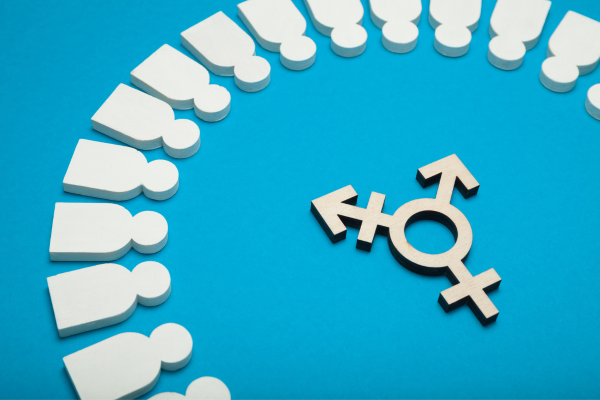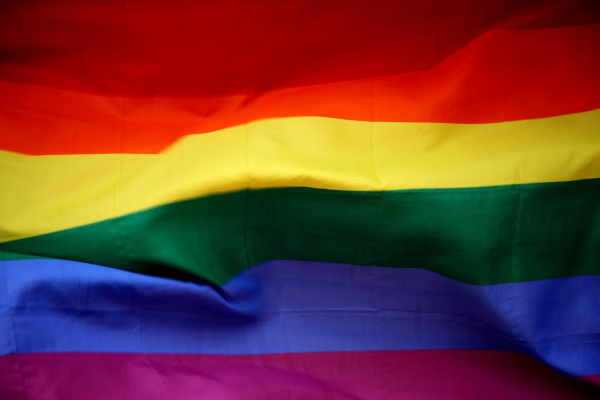What is Fluid Sexuality?

Think back to your high school years: going through puberty, experimenting sexually for the first time, and understanding your body in a new way. Add on your peers talking about sex in the stereotypical, usually heterosexual sense, and your parents having the birds and the bees talk with you (which was most likely incredibly uncomfortable and couldn’t end fast enough). The conversations you had with your peers, family, or internally might not have given you the full picture of what your sexual preferences mean.
Well, this is the adult version of the birds and the bee’s conversation, but we stripped away all of the awkwardness and heterosexual norms. This is a space to discover what sexual fluidity means to you individually because discovering your sexuality is an incredibly personal journey. Throughout this blog, you’ll learn what sexual fluidity means, the ever-growing list of sexual orientations, and resources to turn to if you have questions, to name a few. We hope that you feel empowered by your sexuality and have a stronger understanding of your sexual orientation, attractions, and behaviors after reading on. Knowing that your sexuality can change throughout your life, we hope to be an ongoing resource for you. If there is anything we discuss that resonates with you, we hope you embrace your preferences and empower others to do so, too!

First Things First
Before we dive in fully, in order to have an effective conversation on the topic, it’s important to note the difference between sex and gender. From the WHO via the Council of Europe, when we refer to sex, we’re referring to “the different biological and physiological characteristics of males and females, such as reproductive organs, chromosomes, hormones, etc.,” whereas gender refers to “the socially constructed characteristics of women and men – such as norms, roles, and relationships of and between groups of women and men.” This distinction is important to note because, when talking about sexual orientation, we are mostly (but not exclusively) discussing gender.
Most people are familiar with at least a few of the different sexual orientations, but the list continues to grow as more people express themselves freely. Dr. Justin, ASTROGLIDE’s Resident Sex Researcher, notes that “terms like ‘gay’ and ‘straight’ have historically been used to refer to sex-based attractions about one’s sex.” But there is so much more to sexuality than what we’ve historically discussed.
Sexual Fluidity, Explained
If you’re wondering what it means to be sexually fluid, then you’re in the right place. You may have heard the term “fluid sexuality,” but do you know what it means? It may seem intuitive – to not solely identify with one label of sexuality, but there’s more than that. In the simplest terms, no one stays the same their entire life, so why would sexuality be stagnant? No matter who you are attracted to, you belong to a community of people with the same orientation preferences.
At the core, sexual fluidity can be thought of as a spectrum. Some people are on the left side, some are on the right, some are in the middle, and everyone can move up or down the scale throughout their lives. As people start to explore their sexuality or meet new people that expand their horizons, sexual preferences can change. This isn’t necessarily a universally shared experience, though. Although anyone can be fluid, that doesn’t mean everyone is. In fact, research has proven that women tend to be more fluid than men. This research from APA PyscNet theorizes that “women are sexually fluid due to reproductive pressure from men. These theories suggest that women are fluid, in part, to satisfy male sexual behavior, either by engaging in and enhancing polygynous matings or allowing extrapair copulations for the men with those women the men’s mates select.”
In another study from Springer Link via Wikipedia, the “stability of sexual orientation identity over a six-year period was more common than change, and that stability was greatest among men and those identifying as heterosexual.”

It’s a Label, So What?
If you’re curious about why someone might describe themselves as sexually fluid, Healthline has the answer: “You might describe yourself as sexually fluid when you generally identify with an orientation that doesn’t consistently represent every attraction you experience. Say you primarily feel attracted to women, but you’ve had a few relationships with men. You don’t identify as bisexual, but you consider yourself somewhat fluid since you’re not exclusively attracted to women. Maybe you’ve never had a romantic or sexual relationship with someone of your gender. Still, straight doesn’t entirely resonate with you as an orientation because you feel open to the possibility of a non-heterosexual relationship. It just hasn’t happened yet.” They also note that “generally speaking, sexually fluid people have an orientation that remains roughly stable over time, so you might use this term if you mostly feel attracted to one gender but want to acknowledge the way your attraction and responses sometimes shift.”
It’s completely okay not to want to label your sexuality. Dr. Justin comments that “many of us feel pressure to label our sexuality when we may still be in the process of discovering it. Ultimately, your sexual identity label is up to you—and it’s okay to be unlabeled. And just because you’ve labeled your sexuality doesn’t necessarily mean that others will understand or interpret it in the same way as you.”

Categories and Definitions of Sexual Orientations
By now, you’re aware that sexuality isn’t stagnant, and people’s preferences can change over time. And you’re likely aware of some of the more common sexual orientations that people often label themselves: straight, gay, bisexual, etc. So, we asked Dr. Justin to lay out some of the types of sexuality you may not be familiar with, by may identify as. As a note, this is not an exhaustive list, but some sexualities people may be unfamiliar with. For a fuller list of terms that describe sexual attraction, behavior, and orientation, Healthline has a robust article for your reading pleasures. Consider this your abbreviated dictionary for sexual orientations!
Androsexuality
Androsexual is an increasingly popular term that is often used to refer to someone who is attracted to masculinity (although, as with any sexuality label, different people may define this term in somewhat different ways). Androsexuals are attracted to persons with masculine characteristics, which can be physical and/or behavioral. The people they are attracted to do not necessarily have to have a male sex or gender identity; however, some androsexuals may only be attracted to masculinity among persons of a specific sex or gender. Dr. Justin notes that “while ‘androsexual’ does not have a longstanding, popular use in mainstream culture, a related term — ‘androphile’ — has been in use for decades among sex researchers as a word used to describe attraction to men or masculinity.”
Gynosexuality
Gynesexual (also spelled gynosexual) is a term often used to refer to someone who is attracted to femininity; however, as with any sexuality label, different people may hold different definitions. Gynesexuals are attracted to persons with feminine characteristics, which can be physical, behavioral, or both. The individuals they are attracted to do not necessarily have to have a female sex or gender identity, although some gynesexuals may only be attracted to femininity among persons of a specific sex or gender. He notes that “while ‘gynesexual’ is relatively new to mainstream culture, a related term — ‘gynephile’ — has been in use for decades among sex researchers as a word used to describe attraction to women or femininity.”
Allosexual
Allosexual is a term that refers to anyone who experiences sexual attraction, whereas asexual is a term used to describe those with a lack of sexual attraction. Graysexual persons are somewhere in between—they may experience sexual attraction at times, but only under specific circumstances. In short, if you’re not graysexual or asexual, then you would be considered allosexual.
Graysexual
If you think about sexuality being a spectrum from allosexual (someone who regularly experiences sexual attraction) to asexual (someone who completely lacks sexual attraction), “graysexual” would be the space occupied in the middle. These are persons who may experience sexual attraction at times, but it only happens rarely or under very specific circumstances.
Demisexual
A demisexual person is someone who typically only experiences sexual attraction when they have a strong emotional bond with a partner. Demisexuality is often characterized as a form of graysexuality. Someone who is demisexual could be heterosexual, gay, bisexual, pansexual, or possess other sexual identities. Demisexuality is not about the sex or gender of the people you are attracted to, but more about your relationship with said individual.
Abrosexual
Generally speaking, abrosexual refers to being sexually fluid. For some, changes may occur quickly, whereas for others, changes may occur over much longer periods. If you experience fluctuations in your sexual attraction, behavior, and/or identity, you might be abrosexual. For example, if being asexual describes you at one point but gay/lesbian describes you at another point, and bisexual or pansexual describes you at yet another point, this could be a sign of abrosexuality. Some people who fall into the category of abrosexual may identify themselves as such; however, others may identify as sexually fluid or adopt other labels. Sexual identification is about your self-understanding and what you feel comfortable with.
Polysexuality
Polysexual is a sexual identity that reflects attraction to more than one gender, but not necessarily all genders. It falls under the broader umbrella of multisexuality, along with bisexuality and pansexuality. All of these sexualities have their distinct meaning, but it is important to recognize that different people may define each of these terms in different ways. Thus, it is important not to make assumptions about what a given identity label means for a given person.
****
No matter how you define your sexuality and whether it changes over time or not, understanding your sexuality can be empowering.
